Professor Zoyab Alihussain Kadi
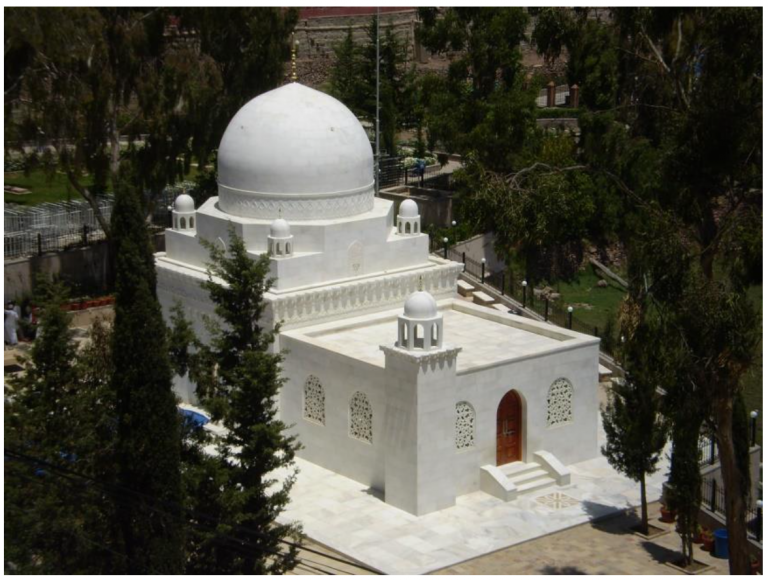
Yemen, at the bottom end of the Arabian peninsula, is a country that conveys an impression of being in no hurry to catch up with the rest of the world. It is yet to tap the full potential of its many assets – a long coastline with a busy seaway; fertile mountains – the Haraz Mountains among them- that trap copious rains; a salubrious climate; daunting landscapes; a stunningly photogenic vernacular architectural heritage and a long proud fractured history that has largely remained untold beyond its borders. United as a single entity as recently as 1990, its prevailing status as a poor cousin of other Arab nations has nudged it out of any limelight; and were it not for the feeble “Arab Spring” in 2011 and the ongoing sectarian confrontations, its contribution of news to the international media is rare, and hardly ever happy. Whereas British seaports of an earlier era, like Colombo, Singapore and Hong Kong have now reached iconic status, its once famed British port – Aden – has actually managed to slip off the shipping map. The bane of the country, apart from its oppressive oligarchical government, is a deep malice affecting a sizeable majority of the adult population – an addiction to the leaves of the “qat” plant that has inured them into compulsive lotus eaters and literally made them speechless.
But matters were not as despondent a thousand years ago. In a severally male dominated, patriarchal tribal society, Yemen has been the only Middle Eastern nation to be ably governed by a woman (not including the Pharaonic Cleopatra or the Jewish Queen of Sheba) – the fearless and incontestable Queen Maulatona al-Hurra al-Malika al-Sayyida Arwa binte Ahmad RA, of the Sulayhid Dynasty.
Deep within these Haraz mountains in western Yemen is the Dawoodi Bohra enclave of Hutayb Mubarak. Perched on a massif and surrounded by treacherous crags and jagged summits, its only lifeline is a single motorable road. The unpredictable screes, left over from roadworks, often turn into disruptive landslides. The topographic features around here offer a vivid explanation of why this place came to be. At a time when there were no roads or pathways, and persecution of some religious leaders was relentless and inquisitorial, here was a place with a double advantage of being a secure hideout difficult to access and an effective sentry point that forewarned of any movement in the countryside.
Hutayb’s location is, in fact, its raison d’ etre. This nine hundred year old enclave is of considerable significance to the Dawoodi Bohra community, a pivot in their history. Under the community’s initiatives and its guiding leadership, the tiny hamlet has become easily accessible over the last sixty years. A concerted cleansing drive has been launched against the cultivation of the “qat” plant in the surrounding countryside; with the crop being replaced mainly by coffee plantations. Yemeni coffee has always been top class, with Mocha, a small port town, lending its name to a world class brand. Ingeniously designed school buildings have also been established to lead these rural children into a better future.
Though sparsely populated by a fraternity of keepers, caretakers and locals, there is a regular flow of Zaireens round the year from across the globe; drawn here by the curative powers of the third al-Da’i al-Mutlaq Syedna Hatim RA bin Syedna Ebrahim RA. From archival photographs and textual evidence dating back over a century, there were earlier markers at the site, but apparently none with a roof covering.
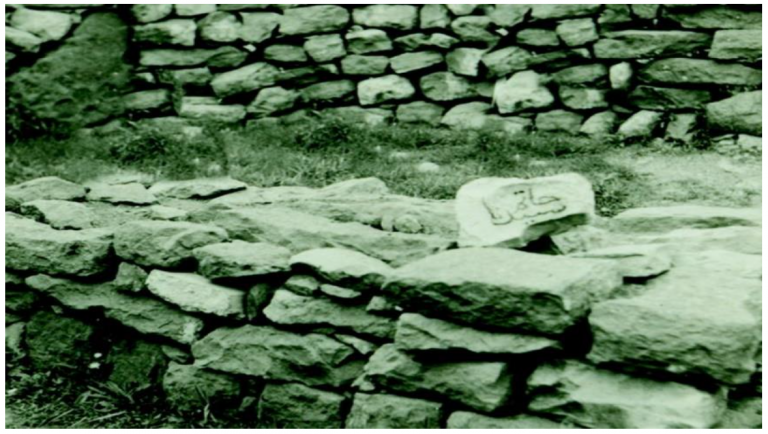
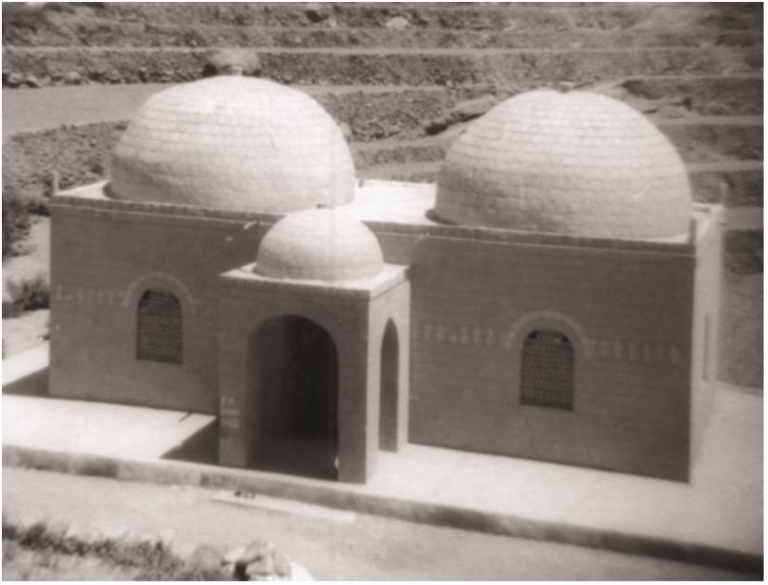
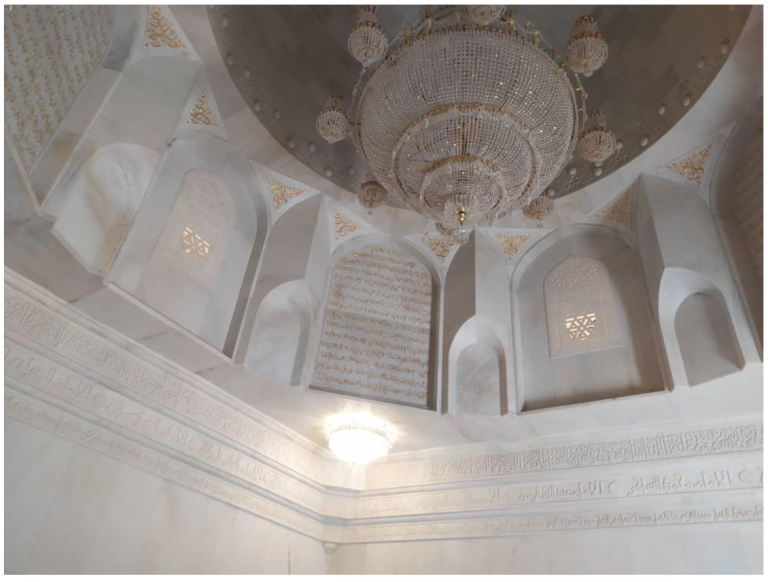
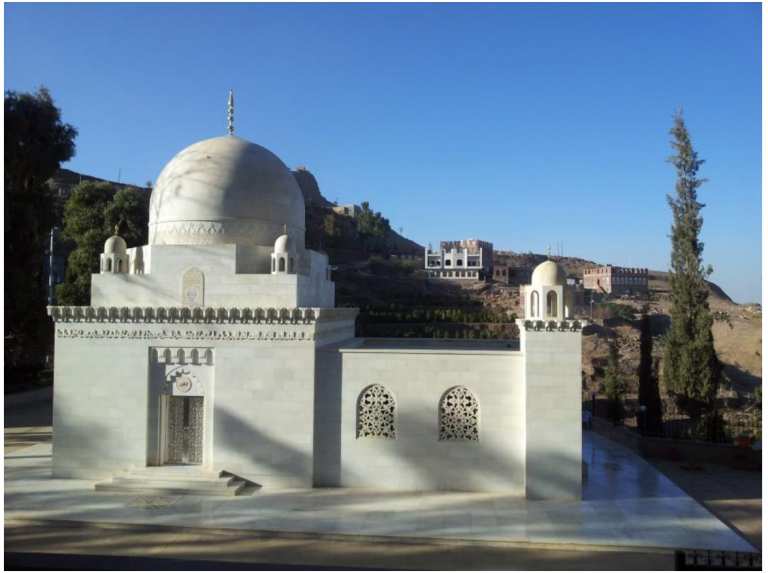
All the architectural elements – from the four entrance doorways, the corbelled cornice at roof level, the semicircular dome, the gilded interiors, including the signature element at the four corners of the roof – were scaled down and reproduced in this far away corner. The stark simplicity of the glowing white marble facades, in a rugged and rustic brown setting, make further embellishments unnecessary. Where it differs from the original is in the front annexe, where an elegant room has been attached along one side. Its presence has been deliberately downplayed by a low flat ceiling so that the majesty of the dome remains unhindered.
Disclaimer–Viewpoints in blog posts do not necessarily reflect those of RadiantArts.
The author, Professor Zoyab Bhai Kadi is a senior architect and planner by profession. Apart from being a mentor to Triple O Studio, he has a keen interest and knowledge in architectural conservation. He has over 35 years of experience in the field and worked with Louis Kahn on the IIM- A project. He has vast experience in the educational field and has been a member of inspection teams of the Council of Architecture, AICTE and the Board of Studies, Andhra University. He completed his Bachelor’s in Architecture from the School of Architecture and Planning, Anna University and his post-graduation in Town and Country Planning from the School of Planning and Architecture, Delhi. He has been at the forefront to document the heritage houses of the Dawoodi Bohra Community in Sidhpur and has published three titles and several journal articles on Sidhpur.

Leave a comment
You must be logged in to post a comment.